Changing the face of the golf business
How more female leaders can make golf more profitable
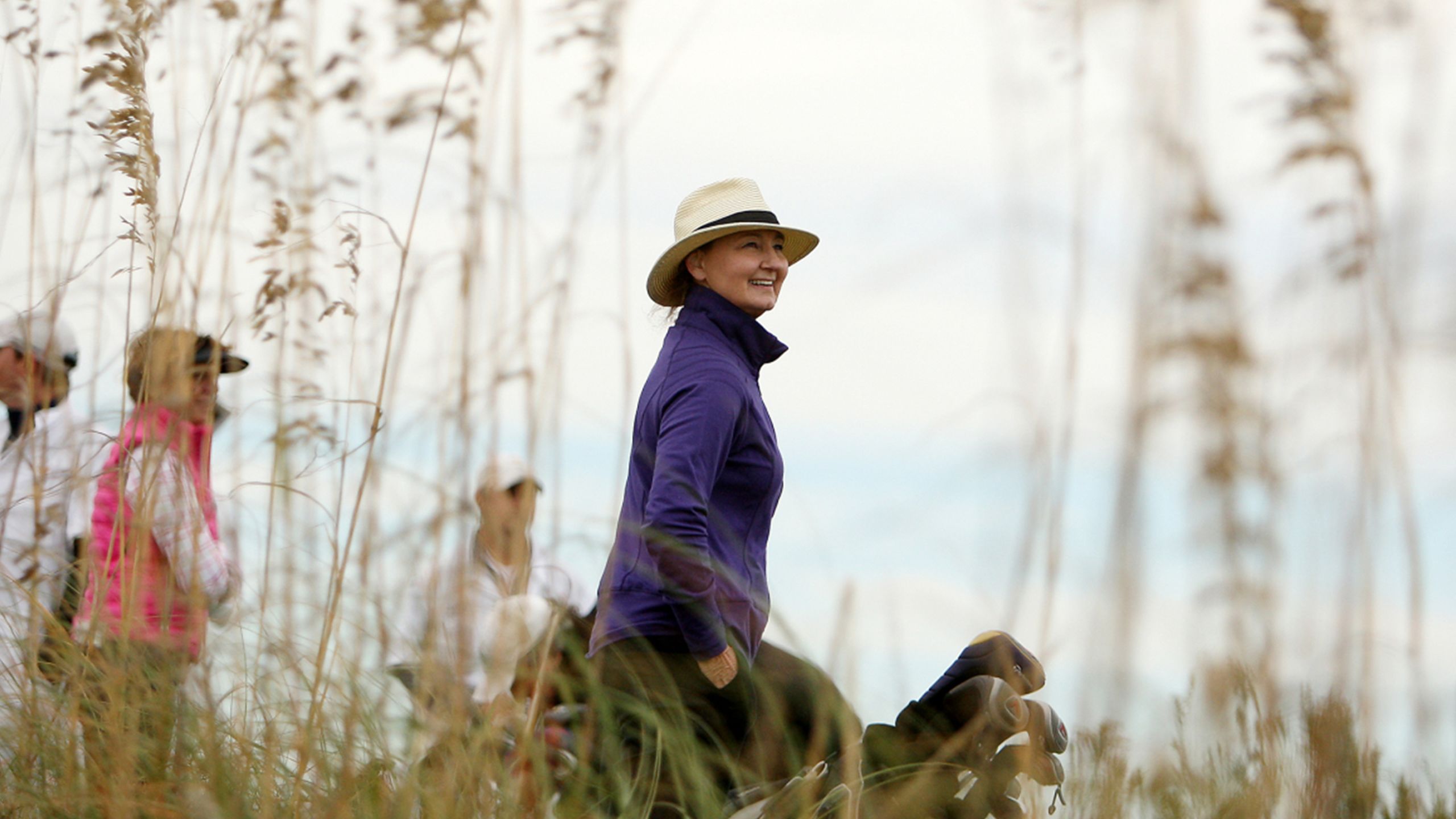
The evidence from global business studies is clear: companies with more diverse management teams achieve greater profitability.
However, in golf clubs in the United States, women make up less than 9% of general managers, only 1.5% of superintendents and there have only ever been four female members of the American Society of Golf Course Architects.
Syngenta Growing Golf speaks to the women changing the face of the golf business and finds out how more female leaders can transform golf.
"Whose wife are you?"
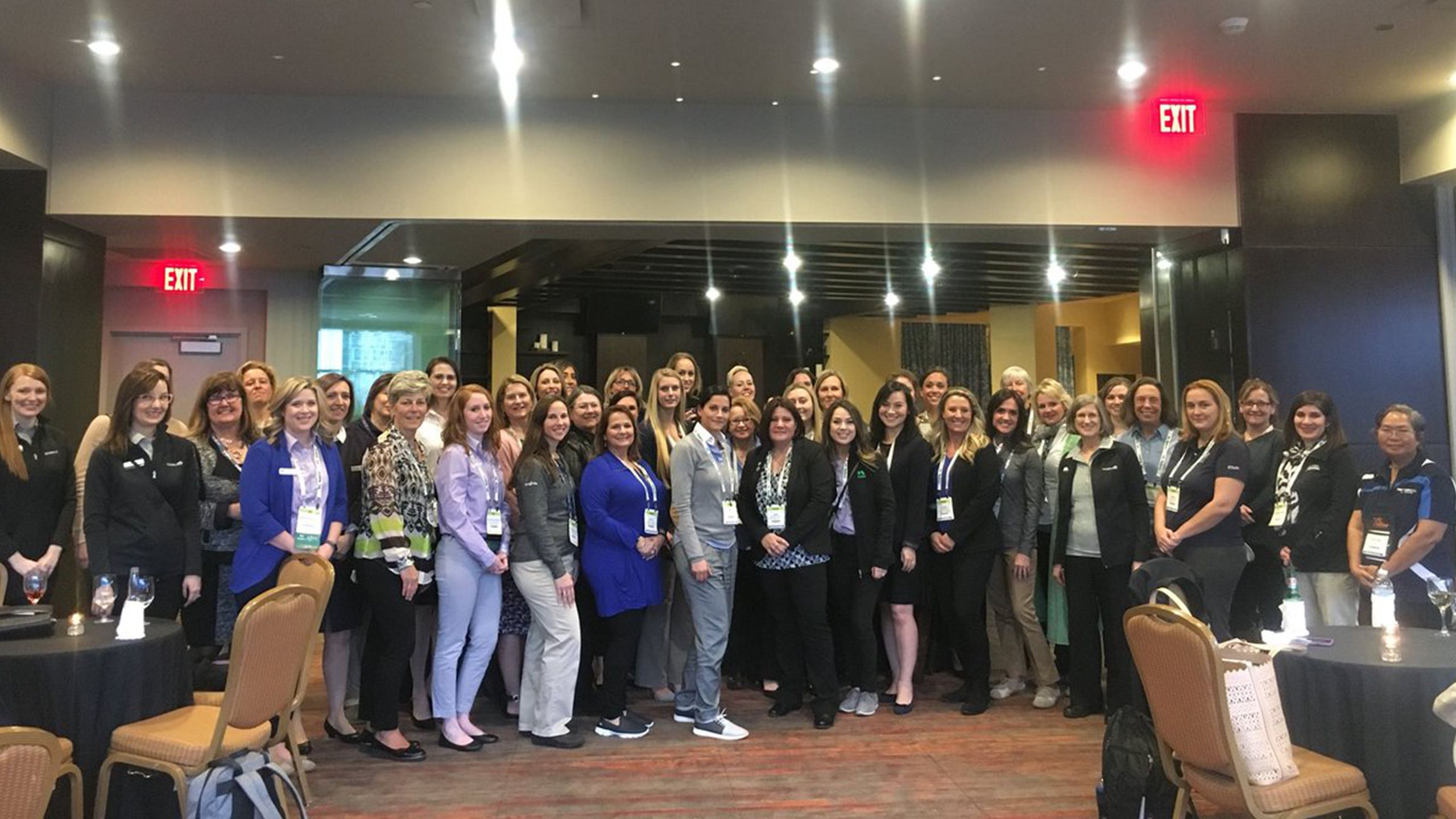
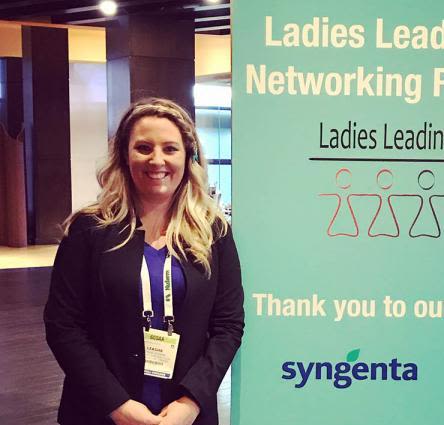
Leasha Schwab - Founder, Ladies Leading Turf
Leasha Schwab - Founder, Ladies Leading Turf
Leasha Schwab is a successful golf course superintendent in Canada and loves her job.
Nothing unusual in that. Until you realize that she is working in a profession where nearly 99% of her peers are men.

Leasha Schwab - Founder, Ladies Leading Turf
“It’s the industry I’ve always been in so I’ve got used to it,” says Leasha. “But it can be a challenge.
“The women I speak to in the industry often say they have a hard time being taken seriously, whether it’s with golfers on their golf course, their fellow superintendents or board members.
“They can be talked above or not listened to and it’s a funny balance because you need to be strong enough to express your views, but you can’t become too emotional as you could be labelled as volatile.”
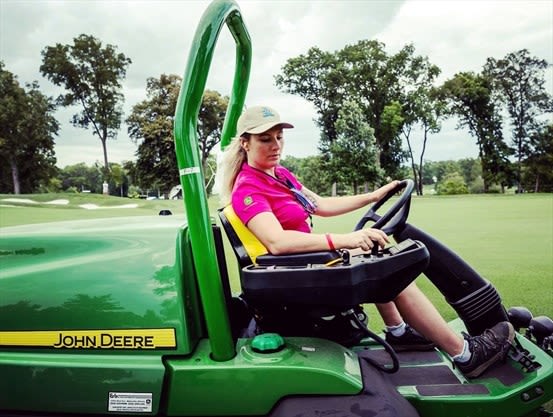
"I lost count of the number of times I was asked whose wife I was.”
In her early career, Leasha says she didn’t know other female professionals and going to industry conferences was challenging.
“In the first three years of attending the Golf Industry Show I lost count of the number of times I was asked whose wife I was,” she says.
But working in a male dominated environment, Leasha has also had to deal with far more serious situations.

“I’ve had men in the turf industry that have been my biggest supporters, my biggest encouragers, and then I have been blatantly sexually harassed to the point I have had to take it to my association to get a guy terminated out of our association.
“When that happened I thought, if I was younger or if I didn’t have the support system that I did, I would be out of this industry in a minute. And so it made me want to create an area where women would be able to have some support for each other.”
Leasha’s response was to establish Ladies Leading Turf, a networking group to support and promote women in the turf industry that met for the second time at the Golf Industry Show in San Diego in February 2019.
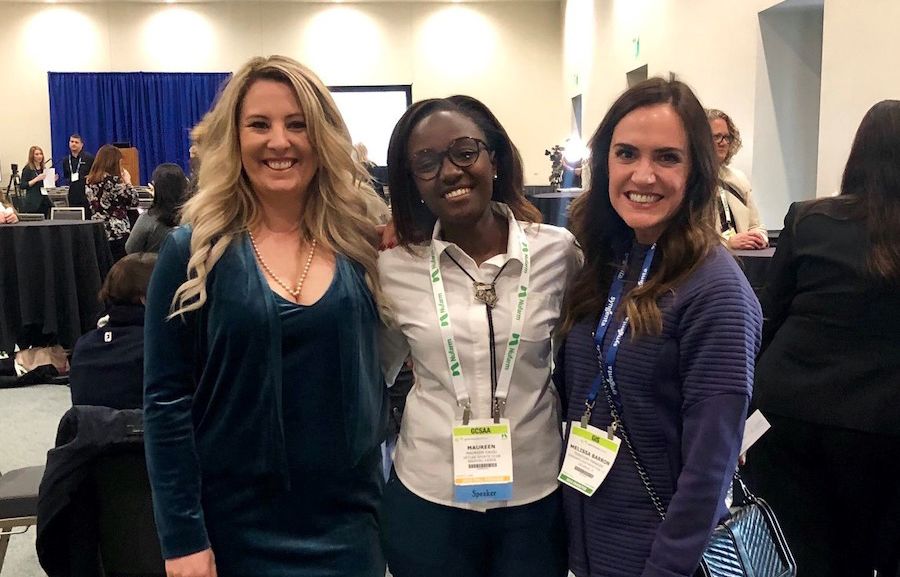
Ladies Leading Turf
The response to the Ladies Leading Turf initiative, supported by Syngenta, has been overwhelmingly positive.
Leasha says one female turf professional told her she had been waiting 30 years for a group like this.
“I remember her face,” says Leasha. “She looked so happy to have other women in the industry around her. Most of the feedback was the same, whether it was women who have been in the industry for a long time or young women who are just starting, who are so happy to meet other women who can be their mentors and give them advice.”

But would more female superintendents benefit golf course businesses?
Absolutely, says Leasha: “Women and juniors are some of the fastest growing parts of golf right now. Golf is starting to become more of a family activity. I think if you have more women on your staff and on your board it brings a different perspective.

"You are different to the men in this industry and that’s ok."
“The important thing for women going into this industry to realize is you are different; you are different to the men in this industry and that’s ok. You bring something new and your ideas may be a bit different, but that doesn’t mean they are not as valuable.”
Leasha acknowledges the golf industry has a long way to go, but she believes positive steps are being taken: “As much as I can be frustrated with this industry sometimes, it truly is, in my opinion, one of the best careers.”

Gender diversity and profitability

As an industry, golf is not unique in the challenges it faces.
Banking has frequently come under fire both for its macho culture and for holding women back professionally. The lack of gender diversity in decision making has even been cited as a contributing factor in the 2008 financial crisis.
In recent years, a number of international studies have clearly shown that businesses with more diverse management teams are more profitable.

In January 2018, global management consulting firm McKinsey revealed that the gender diversity advantage was even greater than previously thought.
It found that companies in the top 25th percentile for gender diversity were 21% more likely to experience above-average profits. (‘Delivering through Diversity’)
Put simply, businesses with greater gender diversity have a competitive advantage.
For golf, where the lack of female leaders corresponds to minority participation, this represents a significant opportunity.
Making golf more diverse


Liz Dimmock - Founder & CEO, Women Ahead
Liz Dimmock - Founder & CEO, Women Ahead
So, how does a more diverse leadership team of equally intelligent individuals make a better business?
In golf, how might club and course businesses perform better if there was increased representation of women among the senior managers, on the board and throughout the staff?

Liz Dimmock - Founder & CEO, Women Ahead
Liz Dimmock is the founder and CEO of Women Ahead, an award-winning social impact organization committed to female development from schoolroom to boardroom, and was among the speakers at the launch of The R&A’s Women in Golf Charter.

Left to right: Chyloe Kurdas, Female Engagement Senior Manager at Golf Australia, BBC Sport’s Hazel Irvine, Sky Sports’ Golf Presenter Sarah Stirk, Nick Pink, Chief Executive of England Golf, Liz Dimmock, Founder of Moving Ahead and Martin Slumbers, Chief Executive of The R&A
Left to right: Chyloe Kurdas, Female Engagement Senior Manager at Golf Australia, BBC Sport’s Hazel Irvine, Sky Sports’ Golf Presenter Sarah Stirk, Nick Pink, Chief Executive of England Golf, Liz Dimmock, Founder of Moving Ahead and Martin Slumbers, Chief Executive of The R&A
"It’s not enough just to be diverse. It’s about how inclusive is the culture within which the team operates."
Liz says, “What we are learning now is that people from different backgrounds and experiences will view the same problem in a different way and come up with different solutions. So increasing diversity increases the number of solutions, increasing the likelihood that one will be successful.
“But it’s not enough just to be diverse. It’s about how inclusive is the culture within which the team operates. How do we reflect the customers to whom we are trying to sell or serve?”
In the case of golf, just 24% of golfers worldwide are female, yet there is significant latent demand among non-golfing women, equivalent to an additional value of up to $35 billion per year, according to Syngenta’s report ‘The Global Economic Value of Increased Female Participation in Golf’.

To request a copy of the report,
email caroline.carroll@syngenta.com
How does golf encourage more women into leadership when, for systemic reasons, there is a limited pipeline of talent?
“Golf is no different to many other sectors and there’s no silver bullet,” continues Liz. “Data is really important, to understand where an organization is, its employee base, the gender split and pay gap.

Image courtesy of Club Management Association of America (CMAA)©
“Then it’s the tapestry of things that need to be focused on recruitment. You don’t want a revolving door and you don’t want quotas, although there are different views on that.
“It’s about having leaders at the top, being inclusive, bringing new ideas and perspectives forward.”
“We know role models are key. As Billie Jean King said, ‘You have to see it, to be it’. So while golf might be lacking, how might it hold up those role models to be a motivator to others?
“It’s about having leaders at the top, being inclusive, bringing new ideas and perspectives forward.”
Liz adds: “I think golf has such an exciting platform ahead. We are not there yet and we shouldn’t be apologetic for that, but it is building a pathway and by bringing in perspectives from the board right down to entry level colleagues, the face of the golf industry is set to positively change.”
Listen to the full interview with Liz Dimmock:
Interview by Gary Firkins
Interview by Gary Firkins

Image courtesy of Club Management Association of America (CMAA)©
Image courtesy of Club Management Association of America (CMAA)©
Profitable by design

One female leader who is both at the top of her profession and proof that diverse thinking drives profitability is golf course architect Jan Bel Jan, named by Sports Illustrated as among the top 10 most influential women in golf.
The 2019-2020 President of the American Society of Golf Course Architects (Bel Jan is the second of only four members in the Society’s history and the second to be elected to President) is the innovator behind Scoring Tees™.
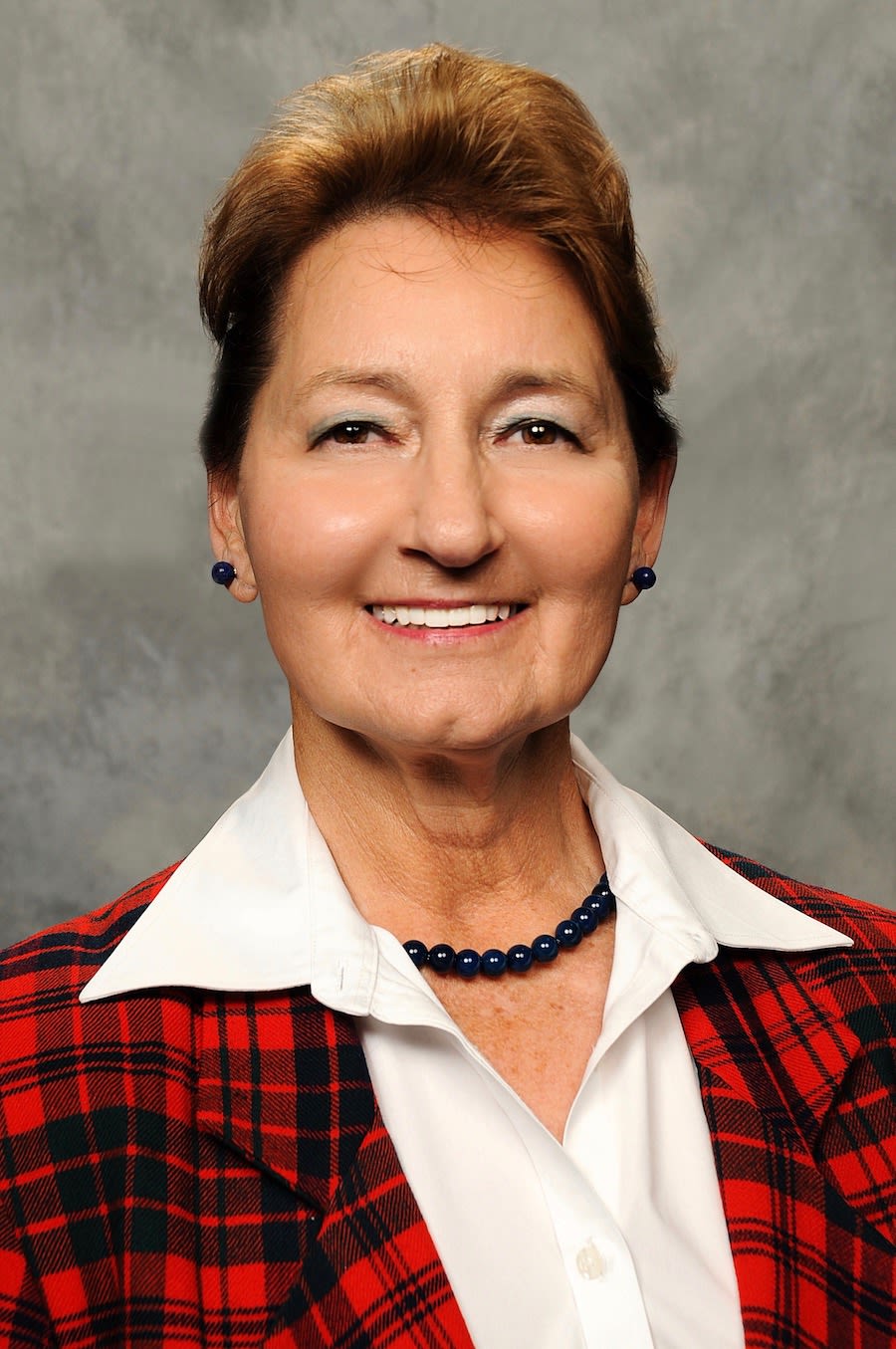
Jan Bel Jan - Incoming President of the American Society of Golf Course Architects and Founder & CEO at Jan Bel Jan Golf Course Design
Jan Bel Jan - Incoming President of the American Society of Golf Course Architects and Founder & CEO at Jan Bel Jan Golf Course Design
“Scoring Tees™ are an opportunity for everybody to learn how to score better, including the novice and the highly skilled player,” explains Bel Jan, who has trademarked the formula.
“It took me time to develop the name because I wanted it to be gender neutral, age neutral and skill neutral. Scoring Tees™ are formal tees, that look like all the other tees on the golf course, and are thoughtfully placed for line of play and line of flight.”
Watch the complete video interview with Jan Bel Jan:
Interview by Gary Firkins
Interview by Gary Firkins
Bel Jan says the shorter course format – typically 4,000 to 4,200 yards – appeals to youngsters, seniors and both men and women learning the game. It also makes the game more accessible to those with disabilities, something Bel Jan is passionate about.
“A shorter course is far more enjoyable for people with slower clubhead speeds because they will be able to get on the greens in regulation relative to par,” she says, explaining how customers are now celebrating making more birdies and breaking 90 for the first time.
Importantly, the innovation is delivering a return on investment for clubs.
Pelicans Nest Golf Club in Bonita Springs, Florida, was one of the first courses to introduce Scoring Tees™ as one design element of a course renovation project Bel Jan was overseeing.

“There was one woman who played 22 more rounds of golf in the first year because she had so much more fun."
“As soon as the course opened it was a hit with many of the ladies,” continues Bel Jan. “Some of them only ever played nine holes because they took so many strokes, but after we put in the Scoring Tees™ they extended their games to 12 or 15 holes and some to 18 holes.
“There was one woman who played 22 more rounds of golf in the first year because she had so much more fun. And because she played more golf, her friends played more golf with her. So there were more rounds, which means more golf balls, more golf outfits, more lunches and more beverages.”
There is a similar story at Green Valley Country Club in Greenville, South Carolina, where the club was bought out of bankruptcy and the new owner was impressed by Bel Jan’s vision for both Scoring Tees and a three-hole short game area.


A New Era
More clubs are now looking at shorter course options. The ‘Golf Facility Market Trend Watch’, published in February 2019, revealed that 70% of general managers in the United States said additional tees to create shorter courses was their #1 preferred amenity enhancement (ASGCA / Sports & Leisure Research Group).
In 2018 the figure was 40%, demonstrating a significant increase in interest in forward tees.

“I can bring ideas that men wouldn’t because they don’t play the same game."
While Bel Jan is not the only person to have proposed shorter courses, owners who recognize the value of thought diversity and inclusivity have enabled Bel Jan to successfully introduce her innovation.
“It’s not gender driven, she says. “But I can bring ideas that men wouldn’t because they don’t play the same game.
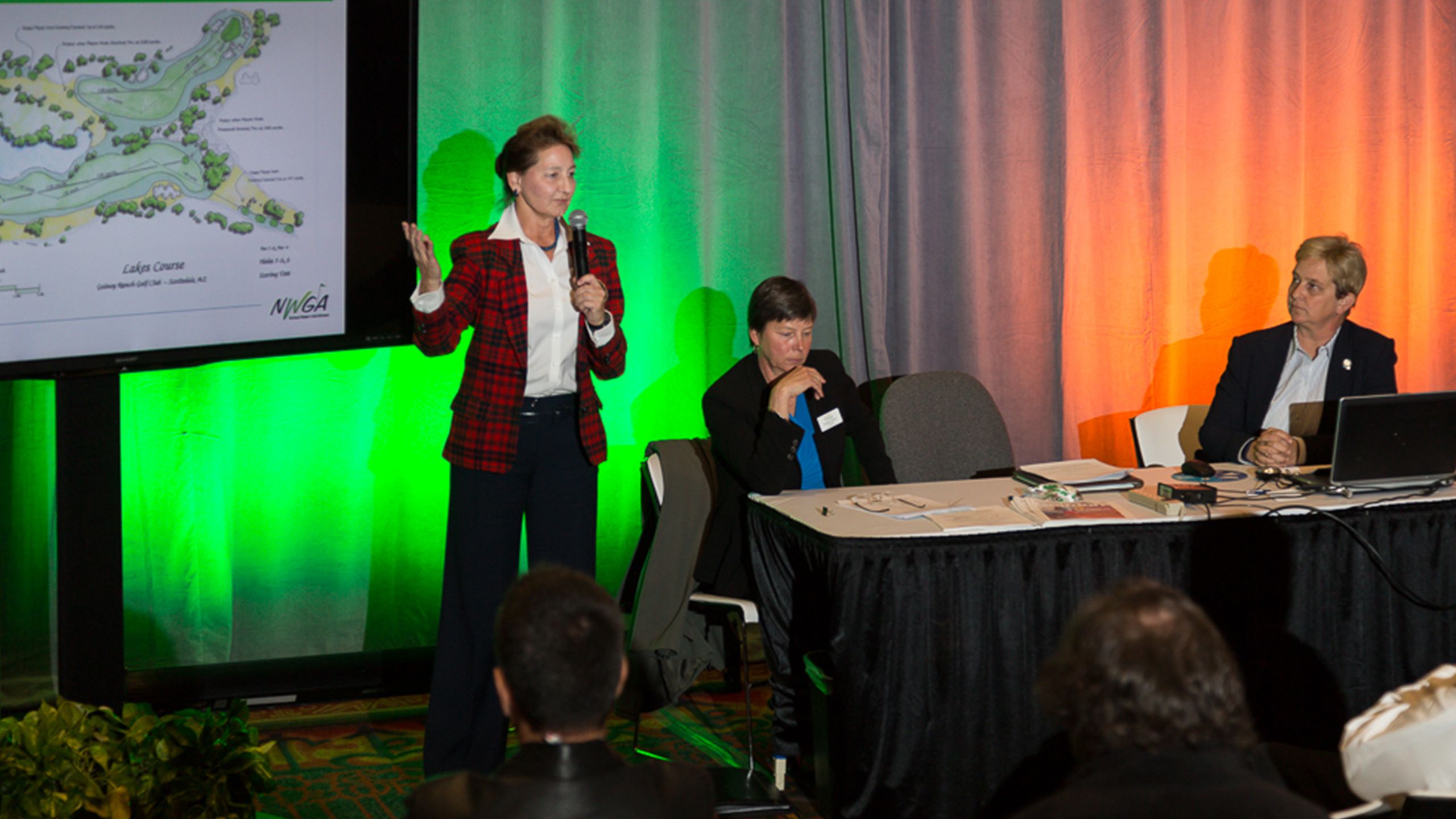
“There is no reason to believe that women don’t bring something different; they do, because their experiences are different.”
Bel Jan adds, “As we help women to have more fun playing golf, we expect to see more women golfers. And I fully expect more women golf course architects to bring to the forefront what is necessary for this and future eras.”
Next steps:
To discover more about Ladies Leading Turf or to get involved contact Leasha Schwab at leasha@pheasantrungolf.com or find her on Twitter: @LeashaSchwab
Syngenta supports The Ohio Program at Ohio State University, increasing diversity and shared learning in the turf industry.
For more information visit:
top.osu.edu
To see how Women Ahead are supporting greater inclusivity across a range of sectors, visit:
www.women-ahead.org
To read and download the full McKinsey report ‘Delivering through diversity’, visit:
https://www.mckinsey.com/business-functions/organization/our-insights/delivering-through-diversity


